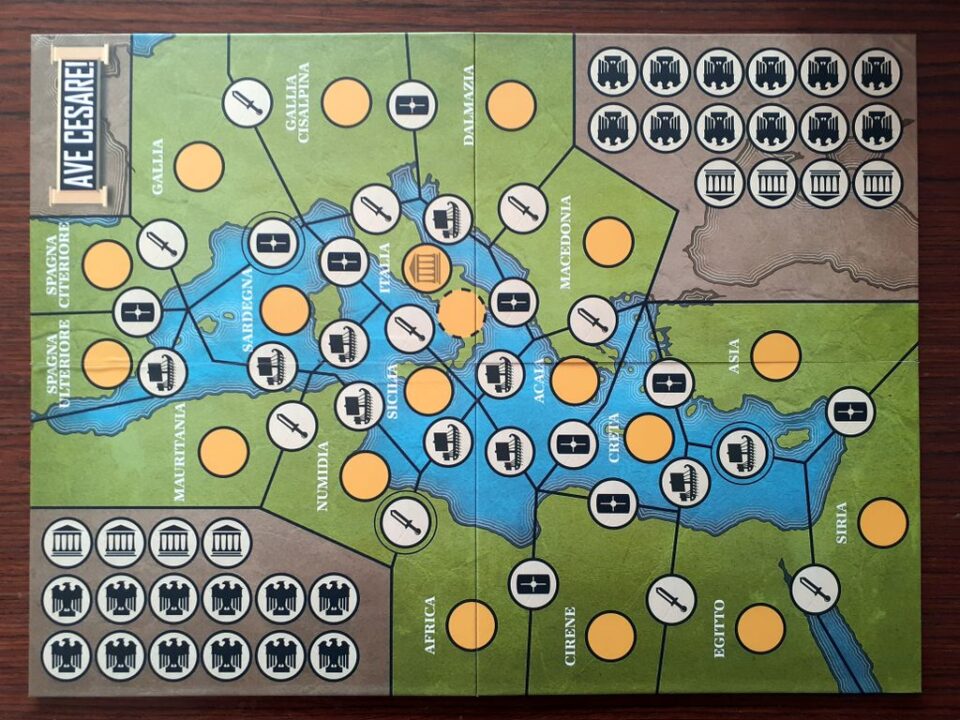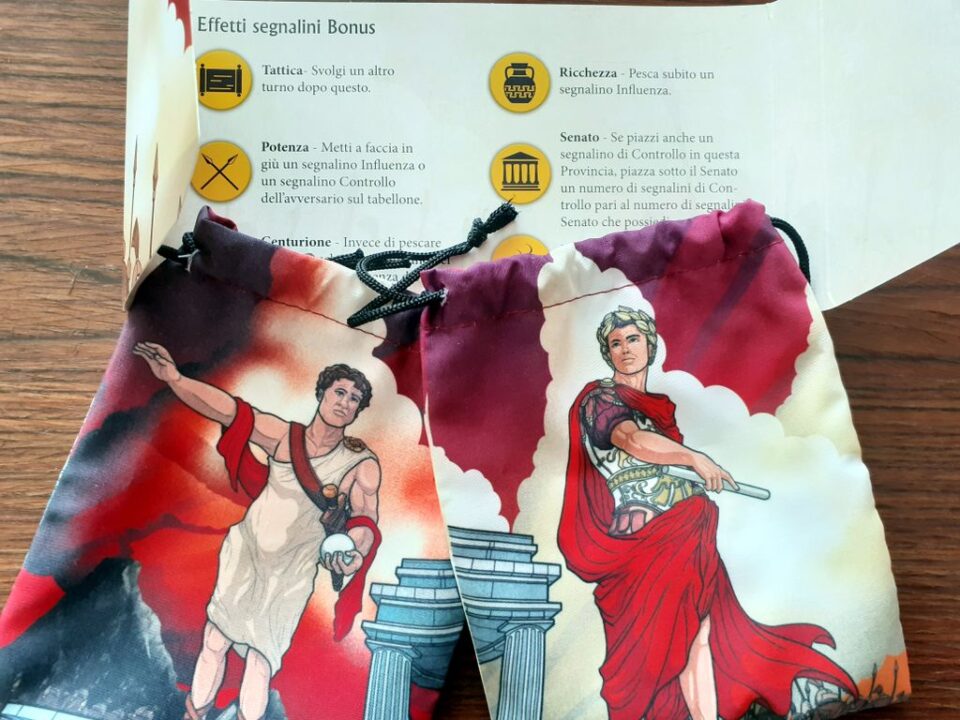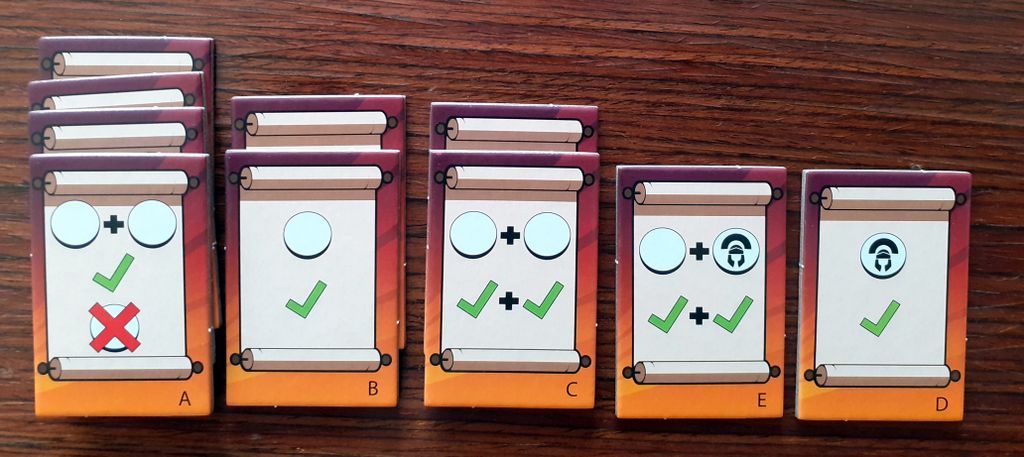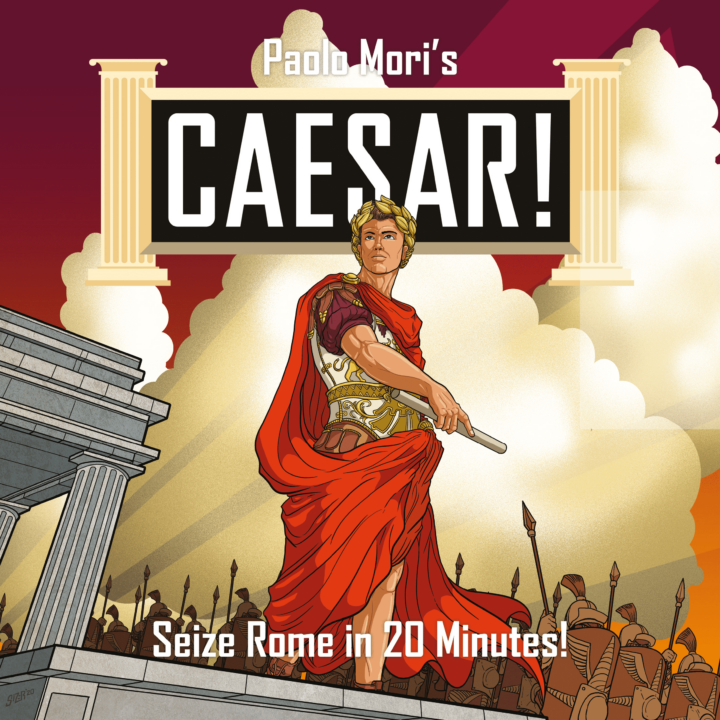Overview
Welcome to the tactical battlefield of ‘Caesar!: Seize Rome in 20 Minutes!‘ where strategy and swiftness combine to offer a condensed, yet riveting board game experience. This is not just another review; it’s your pathway to understanding whether this title deserves a throne in your collection. Within this high-octane clash of minds, players are drafted into a fierce competition against time and each other, maneuvering troops and wielding influence to claim the title of Caesar. Delve in as we dissect the game’s mechanics, revel in its social interactivity, and gauge the pacing that sets the tempo for your rise to power.
How It Plays
Caesar!: Seize Rome in 20 Minutes! robustly bridges strategic depth with brevity, making it an astute choice for those desiring a competitively rich game without investing hours. Its swift tempo demands players to perpetually adapt, carefully balanceling between growth and direct conflict.
Setting Up
Laying the foundation consists of a map setup subdivided into provinces, where players distribute their initial forces. Each competitor receives a set of cards, which guide their actions and possibilities within the game, ensuring every game unfolds with its own unique strategic narrative.
Gameplay
The game is propelled by simultaneously revealed actions, promoting a blend of prediction and tactical spontaneity. Players engage in direct conflict, forge temporary alliances, and manage resources, all while trimming their tactical aim to match a tightly tuned timer.
Winning the Game
Victory is a matter of ingenuity as well as opportunism, awarded to the competitor who can most expertly navigate the cutthroat political sandbox to accumulate the most points by controlling provinces and executing strategic objectives before time’s breath vanishes.
Want to know more? Read our extensive strategy guide for Caesar!: Seize Rome in 20 Minutes!.
The Strategic Breadth of Caesar!: Foundations and Nuance
When delving into the heart of Caesar!: Seize Rome in 20 Minutes!, it’s clear that a mastery of mechanics is essential to conquering this empire-building challenge. The game presents a deceptively simple arena for strategy, yet it unfurls into layers of deep tactical gameplay. Here, efficiency is king. Players must marshal their actions with precision, as the clock on Roman domination ticks swiftly.
Resource Management & Decision Making
The engine of Caesar!‘s gameplay is epitomized by resource management. Every decision carries weight, helping or hindering future conquests. Yet the choices are far from straightforward. Opportunity costs lurk behind every decree, entrenching the game’s roots in strategic planning. Balancing immediate gains with long-term foundations showcases the depth wrapped in this game’s brisk pacing.
Strategic Confrontations
Moreover, Caesar! tips the scales further with challenging confrontations. The push-your-luck combats against rivals demand clever risk assessment, testing one’s adaptability and shrewdness. Here, the cadence of strategic encounters ebbs and flows, marrying luck and forethought in a dance of dominance and surprise.
Next up, let’s shift gears and delve into the arena of Caesar!‘s Player Interaction & Negotiation Dynamics, a socio-strategic battleground where alliances are as fleeting as the glory of Rome.

The Social Conquest in Rome’s Heart
Player interaction is the lifeline of any board game, and Caesar!: Seize Rome in 20 Minutes! is no exception. From the opening gambit to the final decisive move, the game encourages a high degree of player engagement. Truly, it stands as a testament to a game where strategy meats convivial rivalry.
Alliances and Rivalries
Immediately upon unfurling the game’s concise map, players are propelled into negotiations, forming fleeting alliances with one historic twitch. These dynamic relationships are crucial; they offer a social framework sparked by mutual interests but strained under the weight of potential betrayal. Similarly, as players cunningly assemble their armies, discussions erupt. Who will strike first? Will there be a contractual peace or disruptive onslaught? The minds behind Caesar! encapsulated rate social nuance balanly within a simple mechanic set, proving that sometimes, in the corridors of power, words wield the mightiest sword.
Intrigue and Cunning Diplomacy
Furthermore, Caesar! demands that players constantly scan their rivals’ intentions and negotiate under cloak-and-dagger terms. This web of intrigue defines each playthrough differently. Coupled with its brisk pace, the social engagement required to play magnificently complements the game mechanics. The dynamic overtures and political duplicity ensure every assembly around Rome teeters on the brink of camaraderie and competition.
‘Tis in this realm of cutthroat alliances where scores are etched not only on the battlefields but within whispered words. And as these Machiavellian dealings enrich the gameplay experience, stay vigilant; our next detailed assembly will drive the chariots toward Pacing & Time Management.

Mastering Chronology in Caesar’s Conquest
Embarking on a journey through ‘Caesar!: Seize Rome in 20 Minutes!’ begins with an expectation: swift and decisive gameplay. This is more than just a mere premise; it’s a thrilling promise. In our review, we noted that each ticking second is pregnant with the potential to make or break empires. The game demands concentration and shrewd time management, or you’ll find your strategies crumbling as quickly as the Roman aqueducts.
Swift Decisions Spark Intense Duels
Indeed, the rapid oscillation of turns in ‘Caesar!: Seize Rome in 20 Minutes!’ ensures that players are always engaged, always plotting. Unlike games that may drain with drawn-out downtime, Caesar’s pace cultivates adrenaline. You either adapt to the robust tempo, or you watch the eternal city’s gates close to your might-have-beens.
Against the Sands of Time
Throughout the game, each move becomes a critical milestone in your timeline of power. This exhilarating combat against the clock reinforces a compelling gameplay ethos: there is no glory in deliberation; there is only valor in decision. Each session is a sprint against time, meshing seamlessly with themes of bold leadership and empire-building under duress. Hence, if the prospects of strategy, efficiency, and brisk bouts scintillate your senses, then ‘Caesar!: Seize Rome in 20 Minutes!’ should hold a place on your gaming shelf. Heads up, the time you spend pondering this decision is time not spent conquering ancient lands. We definitely recommend giving this game a chance to seize your tabletop.

Conclusion
As we wrap up this review of ‘Caesar!: Seize Rome in 20 Minutes!’, it’s clear this game is a chariot race against time, compelling players to muster their quickest wits and most strategic plans. This isn’t just a game; it’s a battlefield where only the cleverest can claim victory in the blink of an eye. The clever mix of mechanics and player interaction, combined with heart-pounding pacing, transforms an ordinary table into the strategic center of ancient Rome. From savvy troop movements to swift conquests, each decision must be made with both speed and precision. It’s these qualities that define the heart of ‘Caesar!’, making it stand out in the coliseum of quick-play games. Would I recommend this tabletop incursion into Roman history? Testudo formation ahead, legionaries – with ‘Caesar!’, you march into a quick yet rich experience, a game absolutely worth brandishing your dice for!


